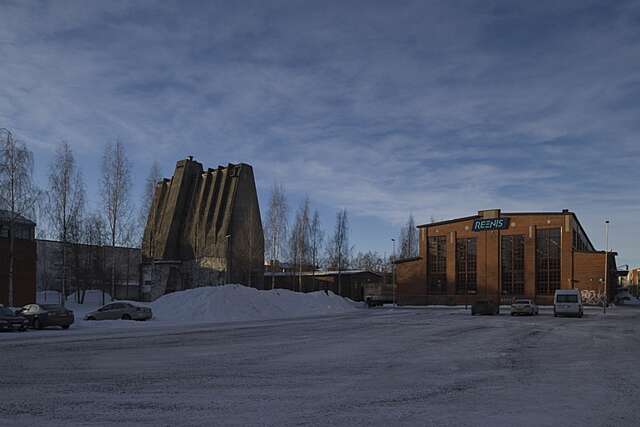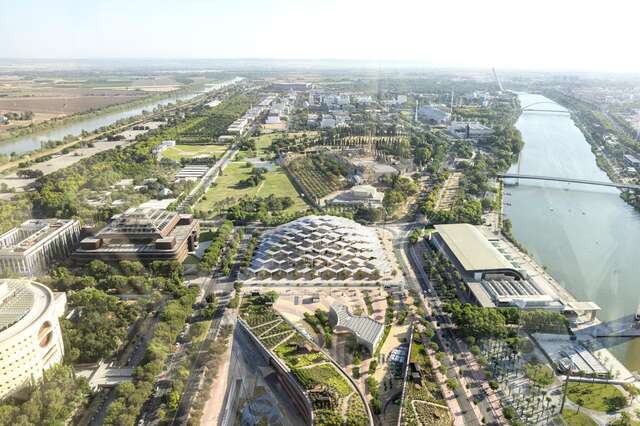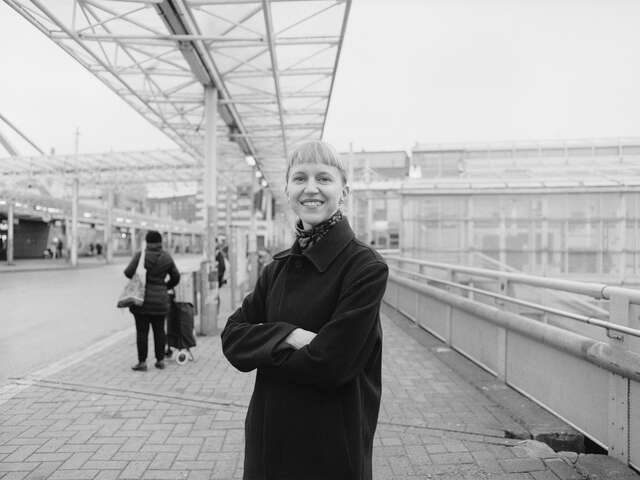Fanatic about facades
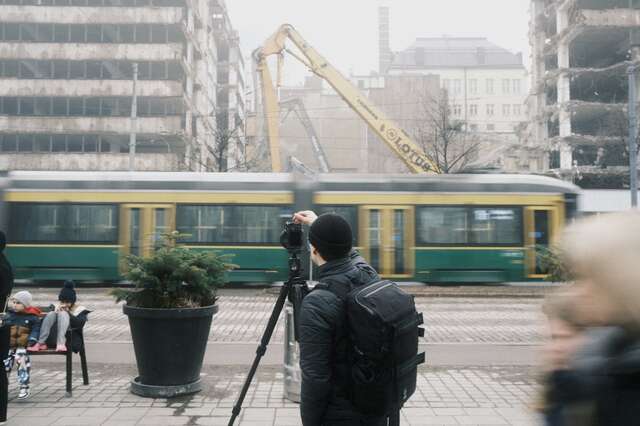
For Kristo Vedenoja, who runs the popular Helsinkifacades account on Instagram, the best thing about photographing buildings is the unique details. Archinfo joined him on a photo shoot and asked why the engineer spends his free time photographing building facades, amongst other things.
A grey Saturday in March does not seem to be a good day for photography, weather-wise. However, we meet Kristo Vedenoja at the statue of the Three Blacksmiths in Helsinki's city centre. Vedenoja, who runs an Instagram account called Helsinkifacades, is a civil engineer by training and photographs facades in his spare time. “Sometimes cloudy and chilly late winter weather compliments the subject perfectly” he tells us.
After changing a couple of lenses, fine-tuning the height of the tripod and finding the right exposure and angle, Vedenoja starts shooting the old Aktia office building on the corner of Mannerheimintie and Kalevankatu, where demolition has proceeded quickly. The torn-open concrete structures look rough against the rest of the cityscape.
After applying to architecture schools with no success, Vedenoja decided to study civil engineering because he wanted to be as close to the field as possible. His day job includes photographing buildings and making 3D models of them.
"So the interest in buildings is pretty clear," Vedenoja laughs. But in engineering, you often have to follow certain rules, and photography gives you room for creativity. On the other hand, his work sometimes feeds his photography hobby in surprising ways: it allows him to visit buildings that he would otherwise not have access to. The tall buildings in the city centre provide a new perspective on Helsinki.
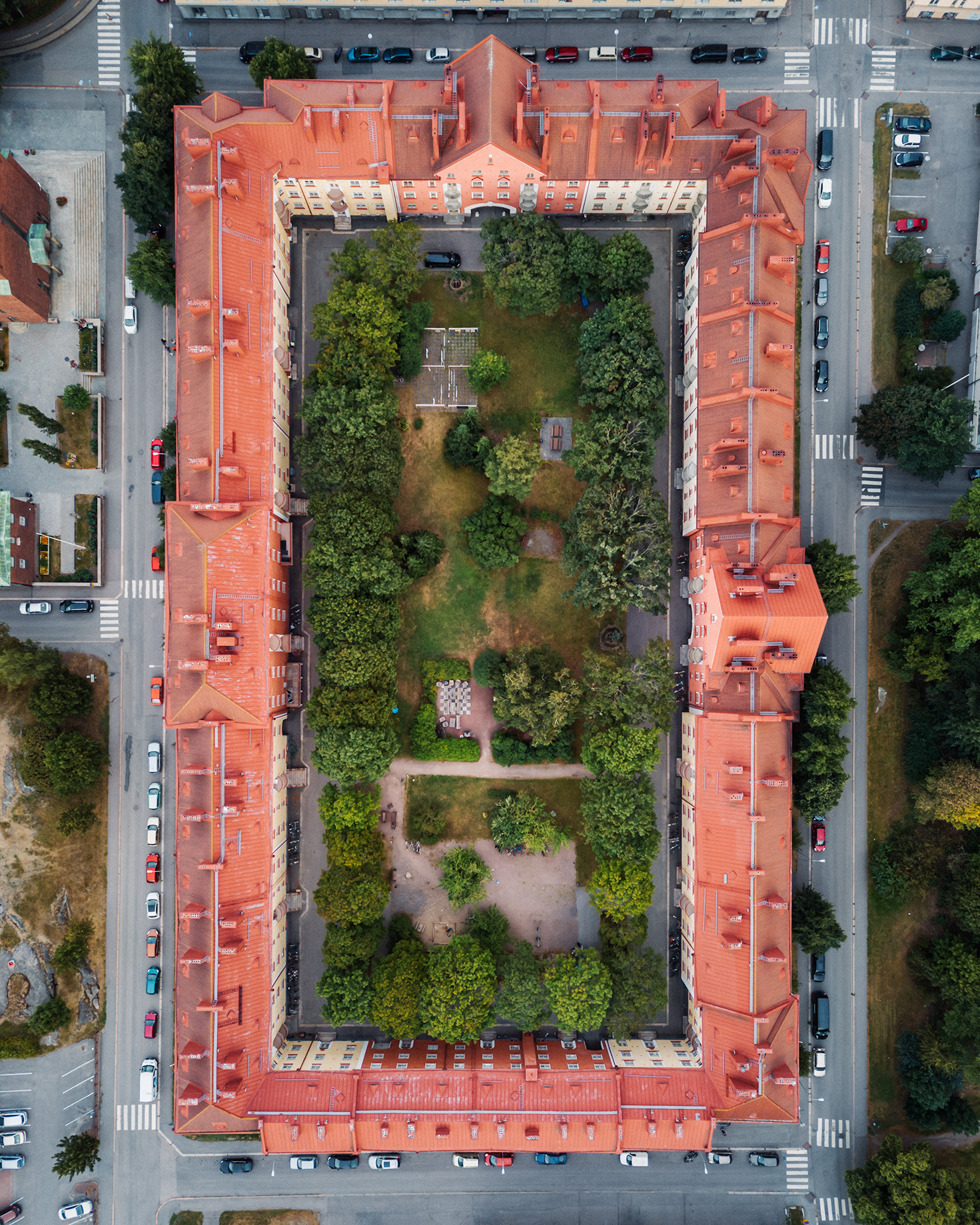
The demolition site of the Aktia building has been captured in a shot that pleases the photographer. All the photo equipment is packed back into the backpack, and we move on to the next destination. We stop at Kalevankatu in front of the Kylliki Art Nouveau building. The space behind the impressive facade is now part of the adjacent Hotel Torni. This time, a successful photo doesn't require a tripod or much preparation. Vedenoja takes the camera in his hand and starts snapping pictures.
On a Saturday afternoon, Kalevankatu is full of parked cars. The people walking by and the moving cars pose their own challenges. When Vedenoja is asked what is the most difficult thing about photographing buildings, he replies after much thought, "Cars. Especially in Helsinki's inner city, the streets are rarely car-free. On the other hand, cars and people can help the viewer to perceive the scale of a building in a photograph," he points out.
A good photo rarely comes by chance
Vedenoja's hobby of architectural photography began with random mobile phone pictures. While living in Töölö, he sometimes took his camera with him for a walk and took pictures of what he saw around him. Since then he has accumulated many cameras, lenses and other photographic equipment.
Over the years, experience has also been accumulated. A successful picture of a building requires a lot of preparation or "a script", as Vedenoja says. So most of the work is actually done before you even press the shutter release.
"It's good to be familiar with the site and its surroundings before you go. In addition, the weather conditions have a big influence, and it's important to watch the forecast to get the right shooting conditions. Other elements such as trams, cars or people also affect the final result, and these should also be taken into account when planning the shot," says Vedenoja. Sometimes, for example, he has used the HSL app to see when the next tram will pass the building he’s photographing, waiting for the perfect moment.
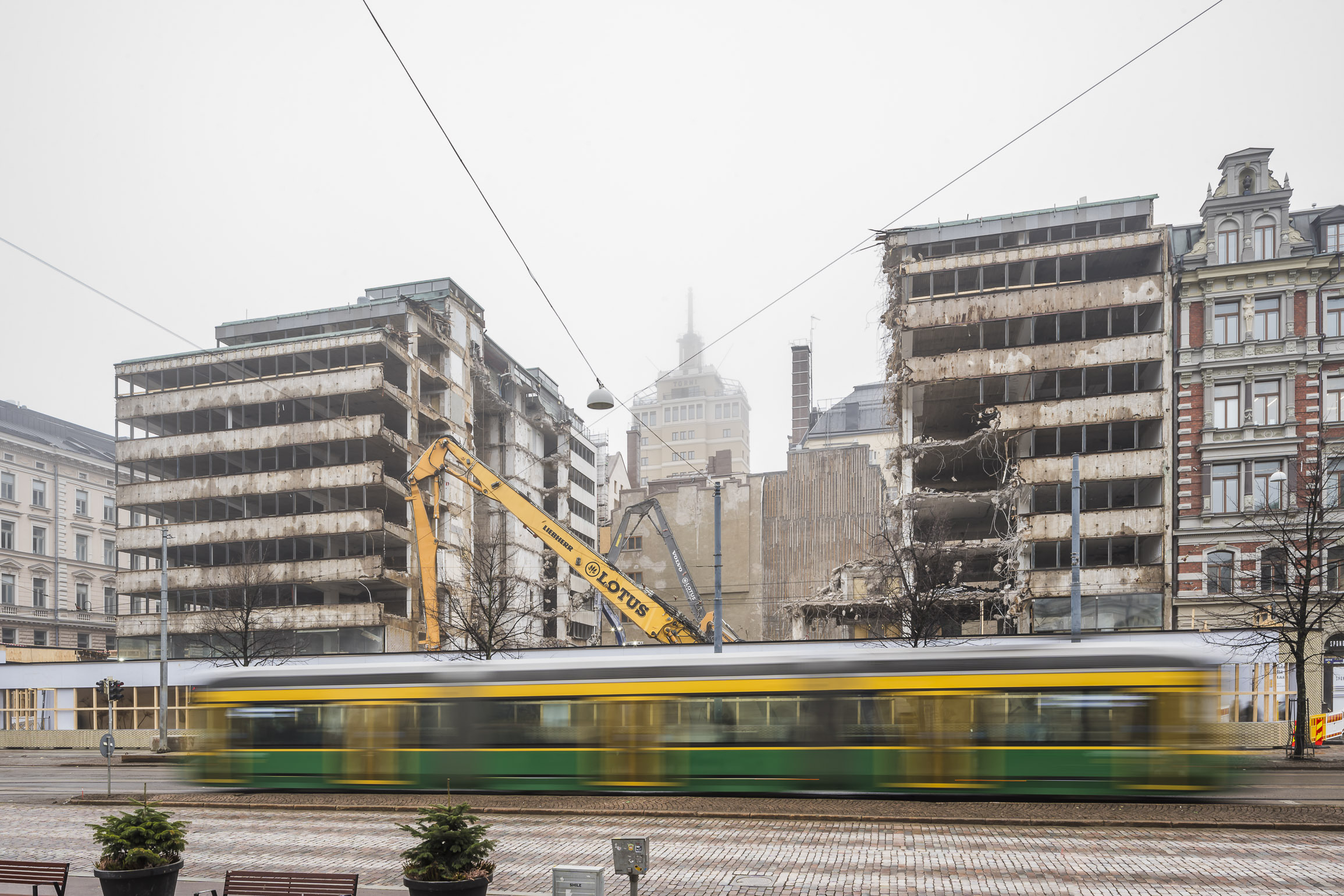
In the past, Vedenoja would choose his subjects based purely on aesthetics: a nice building or an interesting facade would determine where he would take his camera. Today, the history of a building or a funny story attracts the photographer more than just its appearance.
According to Vedeonja, the creation of the Helsinkifacades account was driven by both the desire to show great facades and the desire to tell interesting stories about Helsinki's buildings. "The most rewarding thing is when followers start to pay attention to the buildings around them. Feedback from followers always feels good," says Vedenoja. In addition to his own creative hobby, he says the aim of the account is to document and share buildings.
We have arrived at the final destination of the photo trip: the courtyard of the F6 Hotel on Fabianinkatu, where Vedenoja lays down on his back to photograph the hexagonal atrium courtyard. A moment later, the camera screen shows a picture of the atrium walls making a funny outline against the grey sky. The best pictures require not only a good camera but also thinking outside the box.
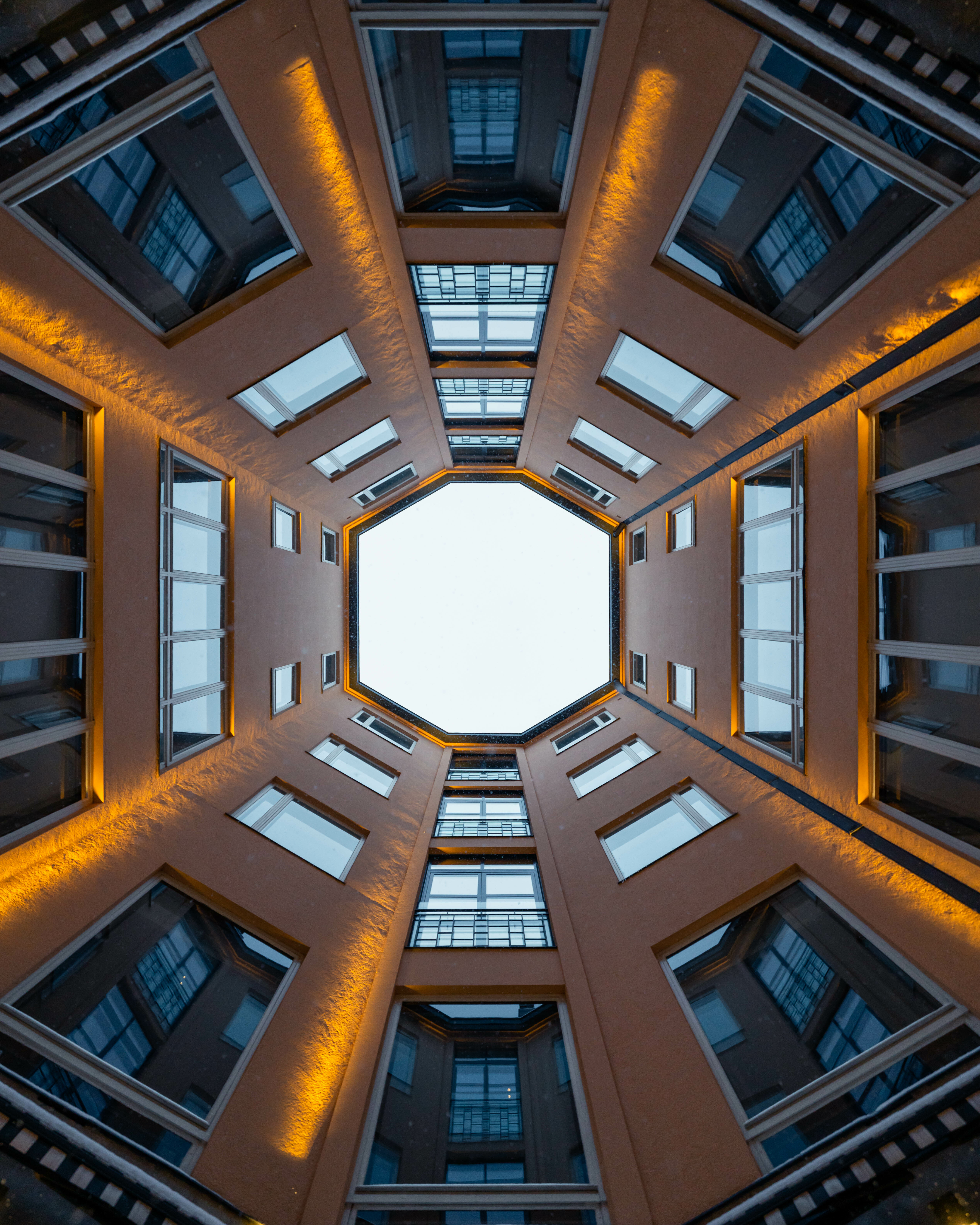
A popular account inspires interest in architecture
The Helsinkifacades Instagram account has over 60 000 followers. The popularity of the account has surprised Vedenoja. "I didn't set up the account to gain popularity and I didn't plan it with any specific purpose, but it came about as a hobby," says Vedenoja. "If a published photo is particularly successful, it still feels good and encourages you to keep going. Likewise, if a picture is not successful, it’s disappointing for a short while." However, the number of likes does not determine which images Vedenoja shares on his account.
Vedenoja's popularity has also been boosted by international media attention: for example, a 2017 article in the British newspaper The Guardian brought a huge increase in followers to the account, and today around 40 percent of the followers are from outside Finland. Vedenoja hopes that his photos will help make Helsinki a more attractive tourist destination.
The account, which has attracted a large number of followers, has also brought along advertisement opportunities. However, Vedenoja does not want to advertise an issue or product that has nothing to do with the content of the page or that he does not otherwise feel appropriate to advertise, so he passes up most of the commercial opportunities for cooperation.
"The aim of the account is not to make money or gather followers. However, I am pleased that so many people are interested in architecture and the built environment through my account."
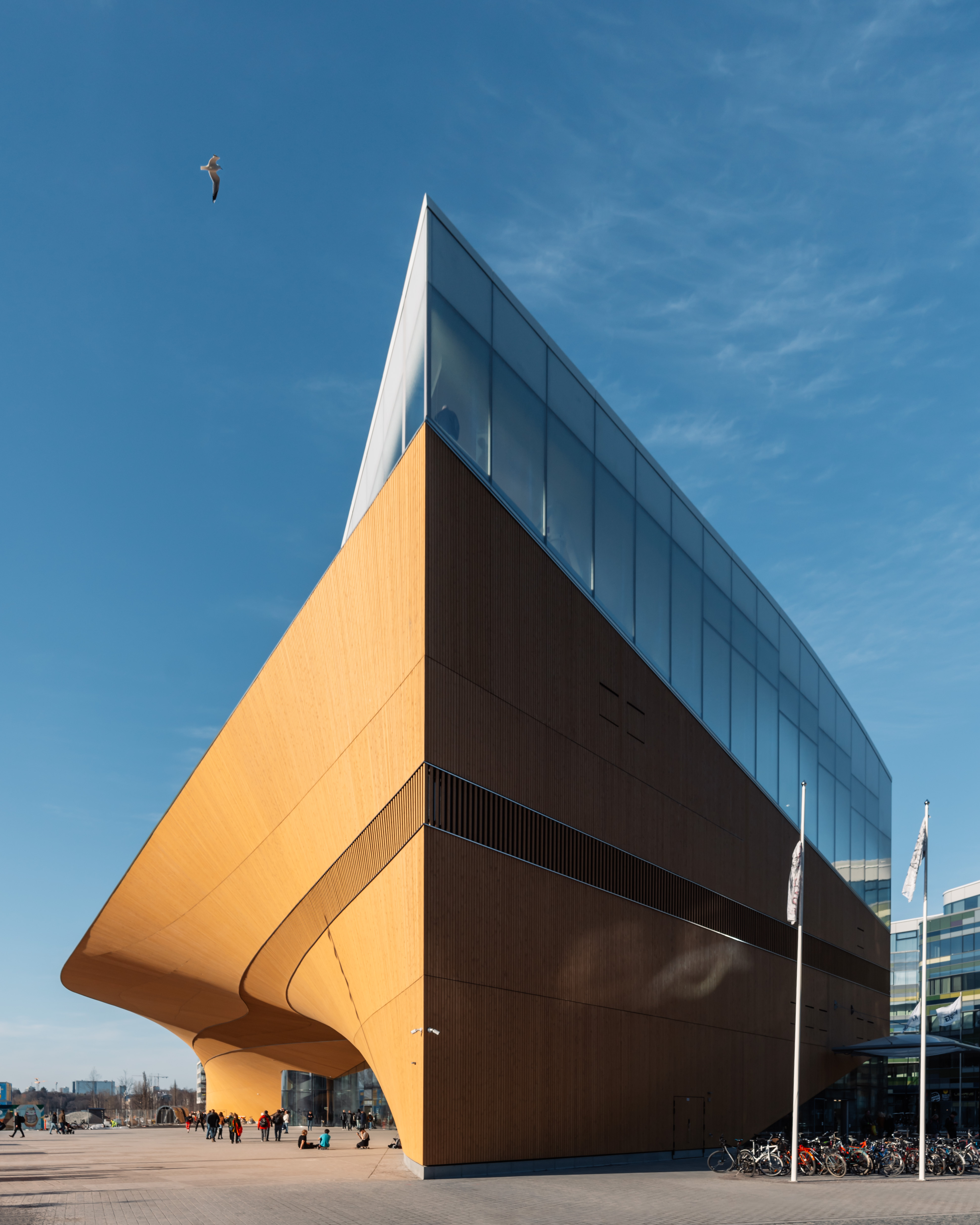
Our first location, the demolition site of the Aktia building, evokes thoughts of the modern demolition trend in the mind of the engineer-photographer. From the perspective of his day job, Vedenoja understands that not all buildings can be repaired or adapted to current needs, and sometimes a new one has to be built in its place. His hope for new construction is that the mistakes of the past will not be repeated and that the life cycle of buildings will be much longer.
"The lifespan should be much longer than the 50 years of current construction. On the other hand, many buildings well under 50 years old are currently being condemned for demolition. In addition, new buildings could retain pieces of the old building, which would bring continuity and history to the building sites," says Vedenoja.
"Helsinki's old building stock is valuable and should be preserved in every way possible. This is what I want to communicate on my Instagram account when I highlight creative and playful solutions for old facades."
Kristo Vedenoja's photographs will soon be available in a printed format when his exhibition opens at the Finnfoto gallery in the Redi shopping centre on 2 April.
